I find peppers to be polarizing. Some people love them (me) and others (my mom) don’t even want to have them in their house.
I wish pests felt the same way that my mom does, but they definitely fall on my end of the pepper-loving spectrum.
There are many types of pests that infest pepper plants, and it’s a rare year that I don’t deal with at least one of them.
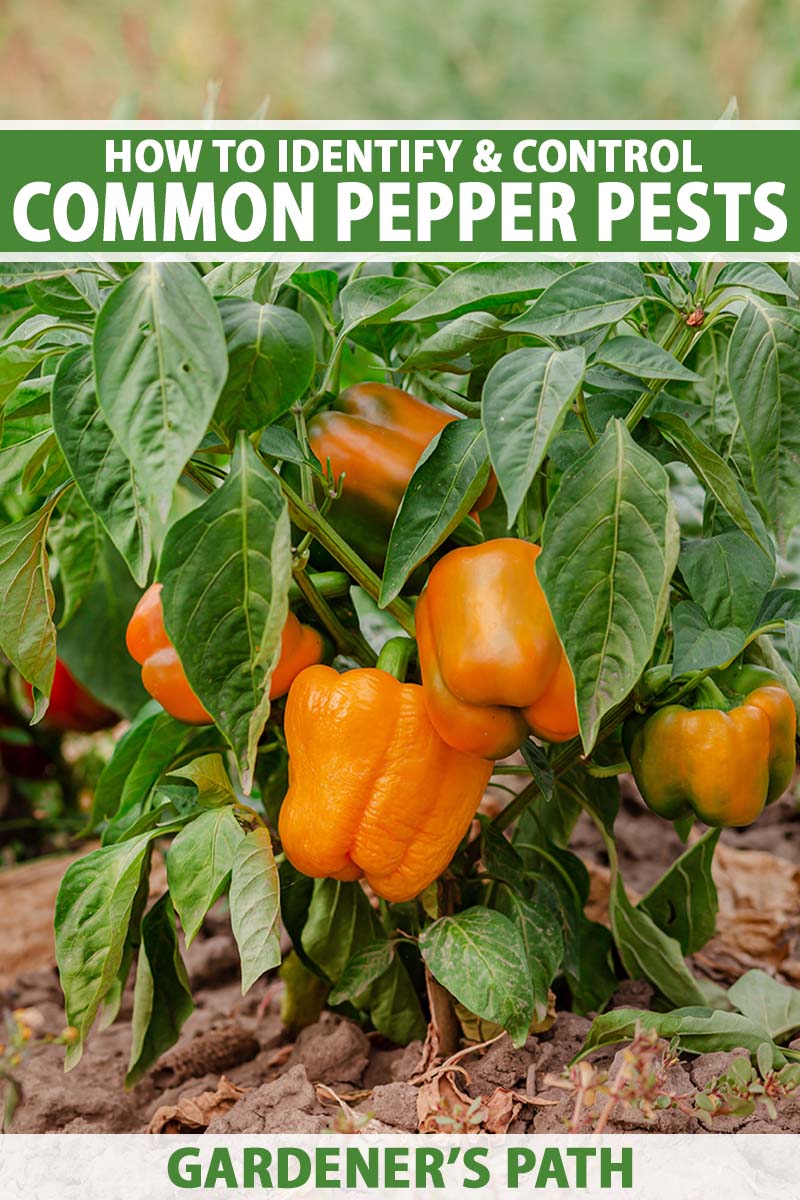
We link to vendors to help you find relevant products. If you buy from one of our links, we may earn a commission.
I rarely encounter pepper diseases, but I swear those insects just sit in their little bug apartments with binoculars trained on my garden.
The second my seedlings go in the ground, they rally the troops and come attacking.
I guess if we want to find a bright side, it means that I’ve become extremely good at spotting them and getting rid of them.
Though they attack my crops often, pests rarely cause serious problems because I’ve become so good at sending them packing.
In this guide, we’re going to talk about the 13 common pepper pests and help you become a bug assassin like me. Here are the pests we’ll discuss:
Excessive pests are often a sign that the balance is off in your garden. But even the healthiest garden will see pest problems from time to time.
Identifying the species is the first step in addressing an infestation, so let’s jump in.
1. Aphids
The list of plants that aren’t impacted by aphids is pretty short. Peppers are usually attacked by green peach aphids (Myzus persicae), one of the most common species to be found in veggie gardens.

These eight-legged insects can be green, orange, or yellow.
Some have wings and others are wingless. If you see clusters of tiny, two-millimeter-long bugs on the stems and undersides of the leaves of your pepper plants, there’s a good chance you’re dealing with aphids.
You may also notice wilting, stunted growth, speckled yellow leaves, and a sticky substance called honeydew that these sap-suckers leave behind.
In general, dealing with aphids on your pepper plants is not too challenging.
Introducing or encouraging natural enemies like ladybugs and lacewings, as well as spraying the insects off the plant with a stream of water, will help you get things under control.
Learn more about how to prevent and manage aphids in our guide.
2. Armyworms
Armyworms, in particular beet (Spodoptera exigua) and fall armyworms (S. frugiperda), are common and sometimes serious pests of pepper plants, particularly in the American southeast.
While they only overwinter in warm areas like Florida, Alabama, and southern Texas, they are accomplished travelers. During the summer and fall, you can find fall armyworms everywhere east of the Rockies and beet armyworms from coast to coast.

Despite the name, fall armyworms (and the closely-related beet armyworms) breed all year round, and can lay eggs in spring, summer, fall, and winter.
Their life cycle takes up to 90 days in the winter and as few as 30 days in the summer.
The adult brown, gray, and cream moths lay their eggs in clusters on leaves of your pepper plants. These eggs hatch after just a few days, and the larvae emerge and mature into what we call the armyworm. It’s these larvae that do all the damage.
Fall armyworms are brown with gray stripes, while beet armyworms are green-striped, with pale and dark green coloring.
They devour the leaves, typically starting from the edges and working their way in. Not only does this harm the plant and leave it open to diseases, but it reduces the plant’s vigor and may impact the size of your harvest.
Typically, beneficial insects like parasitoid and tachinid wasps, as well as minute pirate bugs can help keep populations under control, but sometimes our gardens get out of balance.
Beneficial nematodes and treatments using the beneficial entomopathogenic fungus Beauveria bassiana will make quick work of armyworms.
BotaniGard 22WP contains this powerful fungus and can be used on edible crops.
You can re-apply it multiple times throughout the year without resulting in the kind of damage that a broad-spectrum fungicide can cause.
It not only works to eradicate armyworms, but a number of other pests on this list and other soft-bodied insects as well.
If you’d like to pick some up, you can find this product available in one-pound packages at Arbico Organics.
Follow the manufacturer’s directions closely.
NemAttack Beneficial Nematodes
If you’d like to add beneficial nematodes to the mix, grab Arbico Organic’s Triple Threat NemAttack. They carry it in five, ten, 50, 250, and 500 million counts.
Don’t apply beneficial nematodes at the same time as the Beauveria bassiana treatment. Leave a few weeks in between.
3. Corn Borers
In some areas of North America, such as New England, the invasive European corn borer (Ostrinia nubialis) is the most destructive, though not the most common, pepper pest.
It’s a more frequent problem in sweet types, but spicy peppers aren’t safe, either.

Don’t be fooled by the name. Corn borers like lots of plants besides corn.
This pest attacks corn, peppers, tomatoes, wheat, beans, and pretty much any other herbaceous plant that is large enough for the one-inch larvae to bore into.
The adult moths lay eggs on the foliage, and the larvae that hatch start out by chewing on the leaves before burrowing into the stems and fruit.
Not only is it nasty to open up a pepper and find a live worm – or at least evidence of one – crawling about, but it leaves the fruit susceptible to rot and disease.
The aforementioned Beauveria bassiana is effective against this pest, as is the beneficial bacteria Bacillus thuringiensis v. kurstaki (Btk).
Products containing Btk can help you control a number of different caterpillar and worm species, including corn borers.
Bonide’s Thuricide, which is available at Arbico Organics in quart or gallon ready to use, or eight or 16-ounce concentrates, contains Btk and can be used on edible plants up to a few days before harvest.
Start treating plants with either of these products – not both – as soon as fruits start developing on the plant. Follow the manufacturer’s directions for reapplication.
4. Corn Earworms
Depending on where you live, corn earworms (Helicoverpa zea) can be a problem all year long.
In cooler areas, they only start to become an issue in May… just when you’re probably putting your pepper plants into the ground.
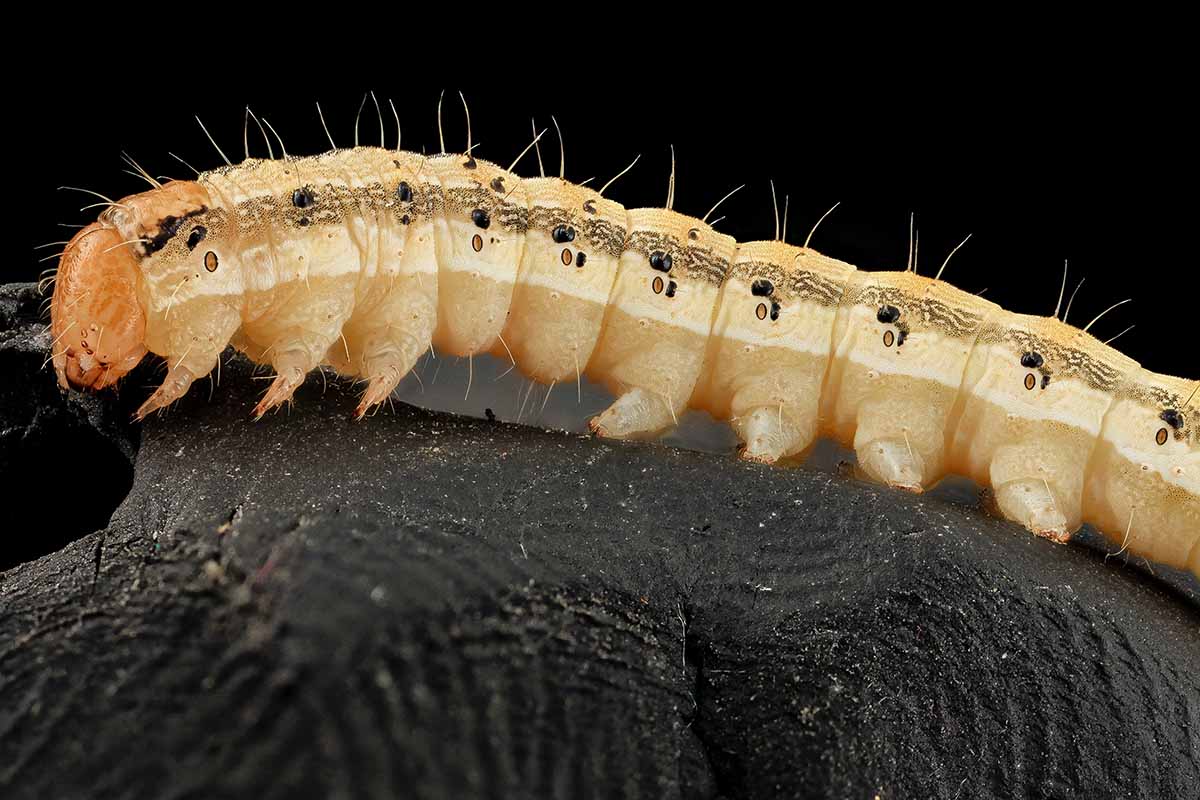
As with corn borers, this pest isn’t content to stick to just corn plants, though if you live in an area where lots of corn is grown, you’re much more likely to run into them.
They eat all kinds of vegetables, including tomatoes, which has earned it the alternate name of “tomato fruitworm.”
The brown and cream, two-inch-wide adults lay their eggs on the leaves of plants. After the eggs hatch, the brown-striped larvae get to work.
They tunnel into the side of pepper fruits and snack away. While you can often just cut away the damaged section – since they don’t move much once they get into the fruit – the damage they cause can leave your peppers susceptible to rot and disease.
I’m sure you aren’t in the habit of petting the pests you find on your plants, but if you give these a little stroke, you’ll notice that their bodies feel rough, thanks to their microspines.
Why on earth would that matter? It helps you determine whether you’re dealing with armyworms, which look extremely similar, or corn earworms.
To be honest, it doesn’t really matter which one you’re facing. Corn earworms can be treated in the same way as armyworms.
5. Cucumber Beetles
Have you seen quarter-inch-long green and yellow striped or spotted beetles on your pepper plants? Say “hi” to the cucumber beetle (Diabrotica undecimpunctata and Acalymma vittatum).
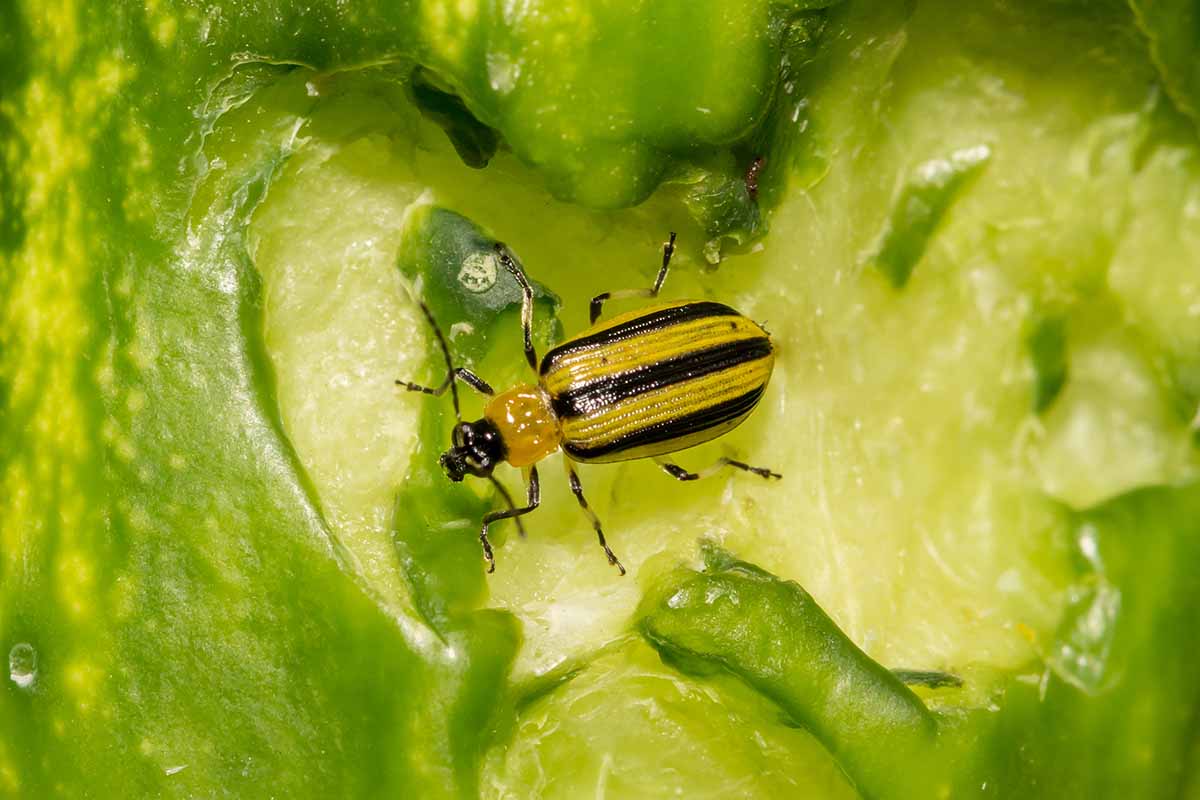
Cucumber beetles can attack plants at any stage, but they’re particularly damaging to young crops.
The adult beetles chew on the leaves, resulting in jagged edges and shotholes. While that’s bad enough, they also spread diseases like mosaic virus and bacterial wilt.
Adults lay their eggs in the soil. Once the eggs have hatched, the larvae feed on the roots before eventually crawling out of the soil to feed on the aboveground parts.
Studies have shown that intercropping with nasturtiums can help reduce damage to nearby plants by repelling the beetles, so put those tasty edible flowers in your pepper garden.
Beneficial insects like lacewings and assassin bugs help, too.
Beneficial nematodes, which we discussed above, will kill the larvae in the soil.
Products containing the beneficial fungus Beauveria bassiana can also be used to control the larvae.
6. Cutworms
I hate cutworms. I mean, I don’t love any of the pests on this list, but at least with a corn earworm, I can just cut out the damaged area of the fruit and go on with my day.
With cutworms, you often don’t even know they’re around until you walk outside one morning and find all your pepper seedlings cut off at ground level.
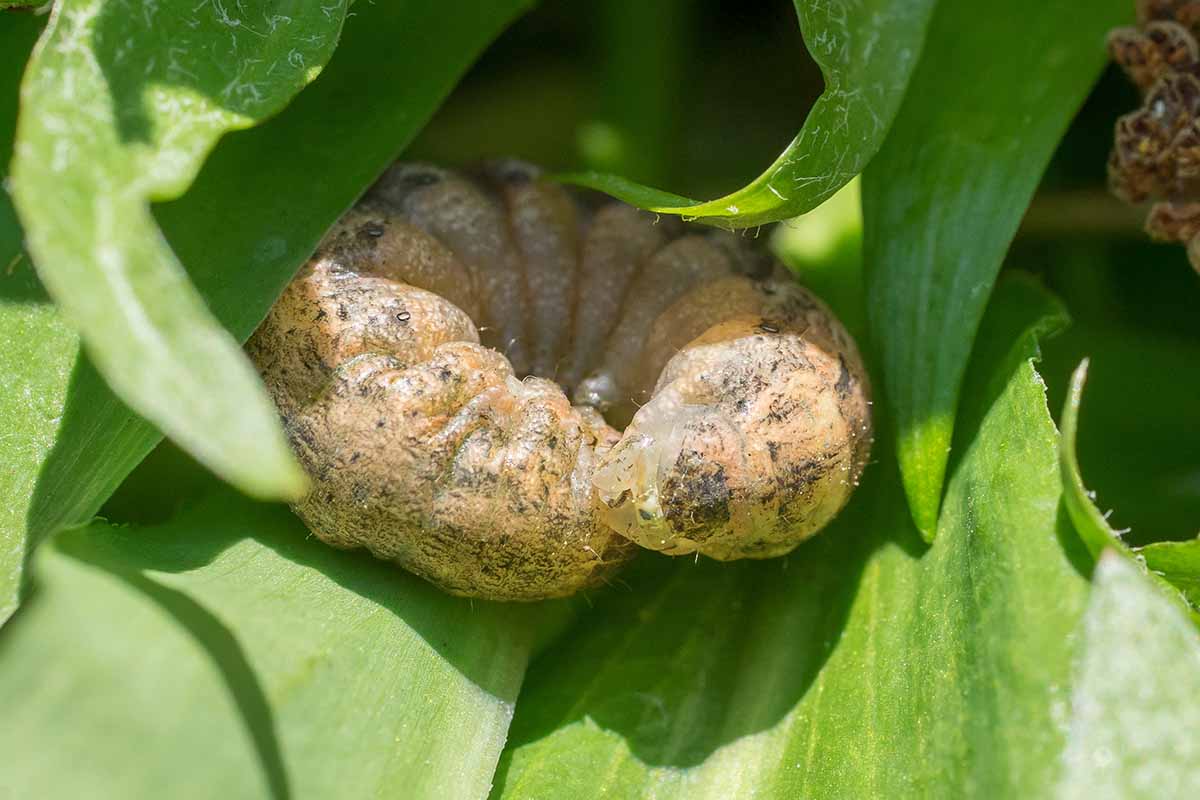
“Cutworm” is a general name for a number of different larvae that feed on the stems of plants. These are the larvae of night flying moths in the family Noctuidae.
Army, black, pale western, and variegated cutworms all feed on pepper plants.
These sneaky jerks hide out in the soil during the day while you blithely walk around the garden thinking everything is all good. Then, cue the horror film music, they come out at night, and that’s when they attack!
Some feed on the underground parts of plants, while others chew through the base of the stem. Regardless of the type, it quickly turns your plant into compost material.
Protective collars, pyrethrins, spinosad, and Btk all work well to control this pest, but you need to be proactive.
If you wait until your pepper seedling is lying prostrate on the ground, all you can do is protect future plants.
Beneficial nematodes are also effective, and birds love to devour cutworms. If you turn the soil over and expose them, you can bet that birds will snap them right up.
If you deal with this pest every year, container growing might be a smart choice, too.
We have a whole guide that can help you effectively manage cutworms in case you’re looking for more information.
7. Flea Beetles
Flea beetles are insects in the Chrysomelidae family and are an extremely common garden pest, and while the telltale shotholes that they chew in the foliage might just seem like a cosmetic problem, they also leave your plants exposed to disease.
The larvae also feed on the roots of plants, leaving them stunted and sickly.

Trap crops like radishes and mustards can draw the pests away from your peppers, since they generally prefer brassicas over nightshades.
Beneficial nematodes are also a good option. And remember our old friends Btk and Beauveria bassiana? Yep, they’re effective here, too.
Head on over to our guide to flea beetles if you want more helpful information on how to prevent and eliminate these pests.
8. Hornworms
There are two species of hornworms that feed on peppers: pepper or tomato hornworm (Manduca quinquemaculata) and tobacco hornworm (M. sexta).
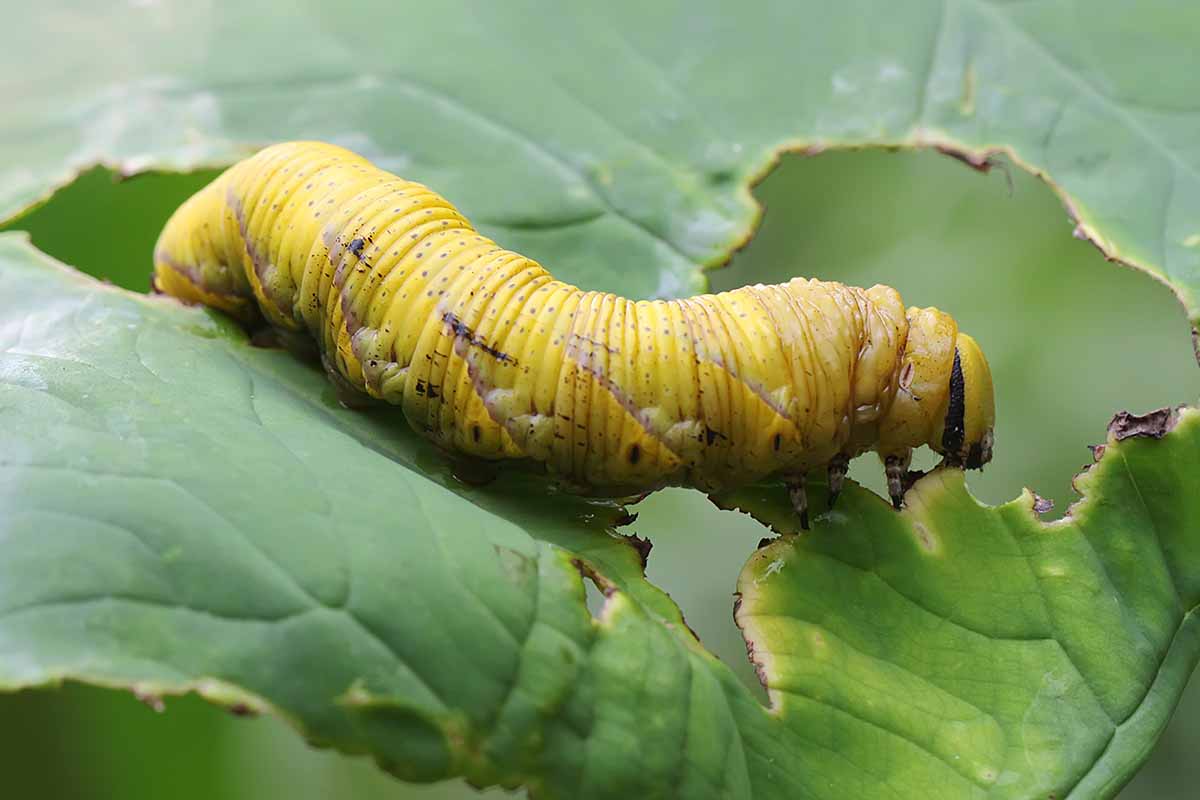
Both are the larvae of large brown moths and both are huge! They’re green and can reach up to four-inches long, and, yes, they have a little protrusion that you could call a horn.
Because these pests are so large, they can eat a lot of plant material in a short time. But they’re also easy to see, so you can simply pluck them off the plant and drop them in some soapy water.
If you want to add another layer of protection, get yourself some lacewings and introduce them to the garden. They’ll make quick work of hornworms.
Arbico Organics carries eggs in quantities from 1,000 to 250,000.
Visit our guide to learn more about controlling hornworms.
9. Pepper Maggots
Pepper maggots (Zonosemata electa) love peppers so much that they were named after them. These seven-millimeter-long insects are yellow and black striped, kind of like a bee.
But instead of pollinating the flowers as bees do, they lay eggs in the developing fruits. As the larvae emerge, they mine through the peppers, causing them to rot and fall from the plant.
The adults will hang out in trees, especially sugar maples and white pines, before laying their eggs.
Since they only lay eggs once a year, floating row covers are the best method of control. Depending on where you live, the flies start laying in mid-July.
If you miss your window of opportunity, beneficial nematodes should be applied to the soil in early August.
For some reason, these insects tend to avoid thin-walled peppers like jalapenos or serranos, preferring thicker-walled types like sweet bell peppers and poblanos.
10. Pepper Weevils
Pepper weevils (Anthonomus eugenii) are ugly little brown beetles that can be a serious problem in warm regions of North America.
While they can’t survive in places where their host plants die during the winter, they can travel north on plant shipments where they can wreak havoc during the growing season.
The adults will feed on the leaves and fruit leaving behind cosmetic damage, but it’s the larvae that are the real problem.
The larvae feed on the buds and tunnel into the fruit, resulting in deformity or fruits dropping from the plant.
These puncture wounds from the larvae tunneling into the fruits also leave the peppers open to disease.
If you live in a cooler climate and you don’t grow peppers year-round, clean up any fallen fruit immediately and spray plants with the Thuricide product described above.
If you live in a warm region and grow peppers year round, do the same, but consider pulling plants for a year if an infestation becomes extremely bad. The bugs will also feed on other nightshades, so you’ll need to pull those, as well.
That’s why this pest is a serious problem in warm areas like the south, but not so much in northern states where nightshades don’t survive through the winter.
11. Potato Leafhoppers
Potato leafhoppers (Empoasca fabae) are a significant pest for commercial pepper growers. In the home garden, they’re a nuisance.
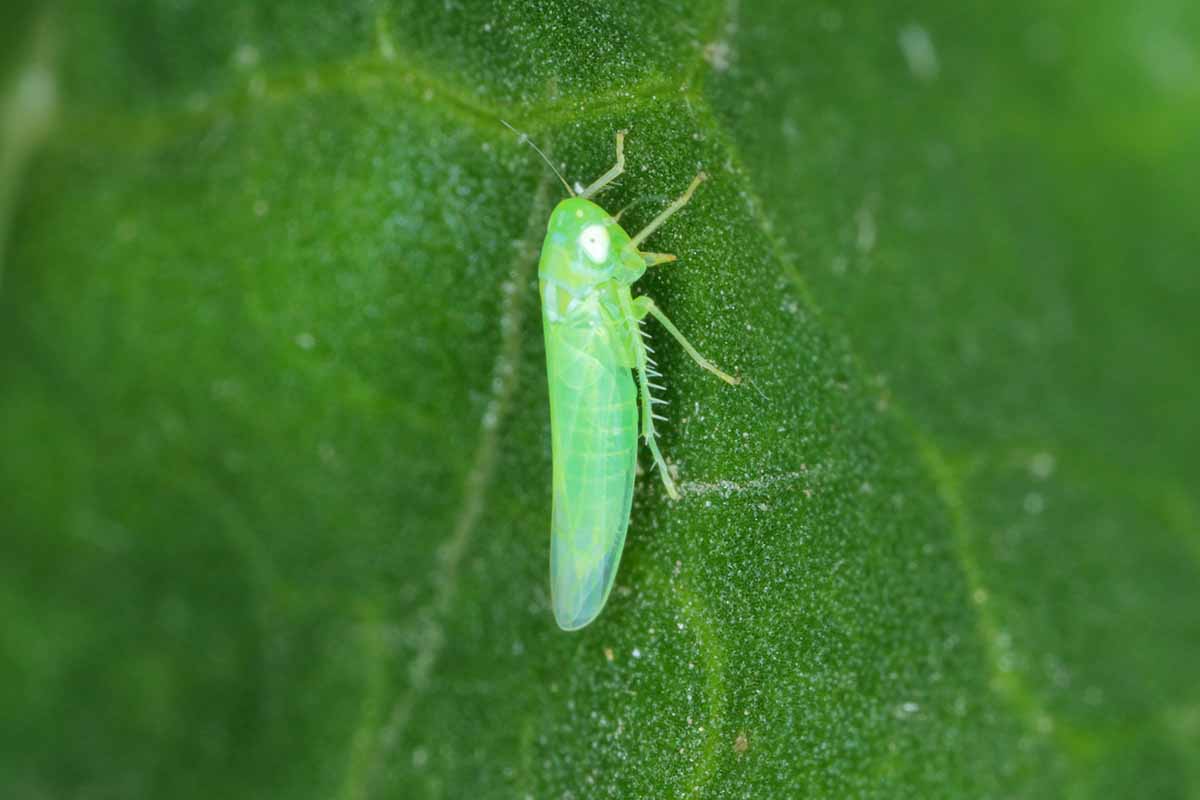
These pale green, eighth-of-an-inch-long insects hop and scuttle across the leaves when disturbed. When left alone, they feed on the leaves and lay eggs on the stems of the plant.
When the larvae emerge, they feed on the leaves, resulting in “hopperburn,” which is a yellowing of the leaf edges due to a toxin in their saliva.
While they can be a serious problem for potatoes, beans, and alfalfa, they usually just cause cosmetic damage on peppers. If you introduce lacewings and sprinkle diatomaceous earth on the leaves, that should be enough to keep them under control.
Plants that are weakened by drought stress are more likely to be harmed by these pests.
Remove any damaged leaves and support your plants with proper irrigation.
12. Spider Mites
Red spider mites (Tetranychus uritcea) are extremely common in the garden, but most of us don’t notice them until we start to see symptoms on the leaves and stems of the plant.
That’s because you have to look really closely to see these tiny spider relatives.
Instead, you’ll see the webbing that they weave, as well as yellow stippling on the foliage, falling or curling leaves, and leaf bronzing.
In really bad cases, existing fruit and flowers will drop and the plant might become stunted and lack vigor.
Typically, spraying your peppers with water regularly and pruning any severely infected branches should be enough to keep your plants in good shape.
If you start to see extensive damage, visit our guide to learn some helpful tips for controlling spider mites.
13. Thrips
Thrips (insects in the family Thysanoptera) are teeny-tiny.
You probably won’t notice them on your plant, but what you will notice is the damage they leave behind.
These insects feed on the leaves and stems using their tiny, piercing mouthparts, and while that can cause discoloration, deformed growth, and plant stunting, they also spread deadly diseases like tomato spotted wilt virus.
I’ve found reflective mulch can really help to keep populations under control.
Don’t bother with insecticides because once they bite into your pepper plant, they’ve already transmitted any disease they’re carrying. Avoidance is best.
For more information on controlling thrips, visit our guide.
Show Pepper Pests the Door
One year it’s spider mites, the next it’s hornworms. It seems like you get one pest under control and another moves into its place.

What I will tell you is that creating a healthy, balanced environment in your garden will significantly reduce the number of pests you’ll face.
So while you have all the tools above in your toolkit now, remember to plant native species that attract beneficial insects, rotate your crops, try to diversify your plantings, and avoid pesticides, herbicides, and fungicides as much as you’re able.
Which pest on this list are you dealing with? What did you find worked best? Let us know all about it in the comments section below!
Now that you know how to send pests packing, you might be interested in expanding your pepper knowledge. If so, check these guides out:
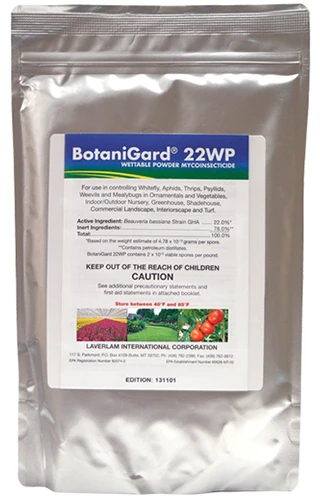

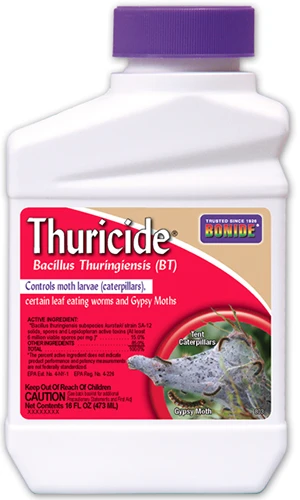
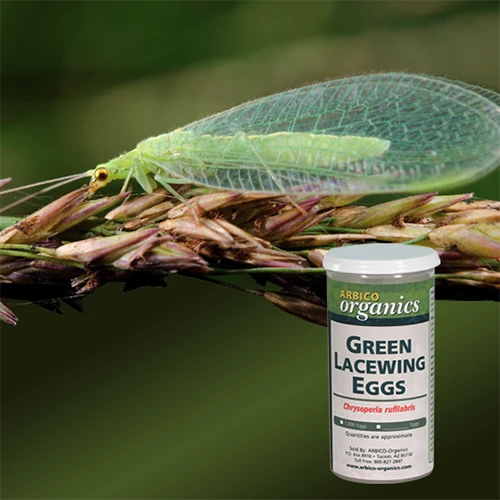



Hi, Last year, for the first time, I had a pest problem. Something bored through through a variety of my sweet peppers, and I found their remains inside the pepper. There was nothing remaining that allowed me to identify the creature, but I surely didn’t want to eat the peppers. Toward fall, I was loosing about half of my peppers to these creatures.
Hi William, it sounds like perhaps you’re dealing with pepper weevils or corn earworms, both of which we discuss above. It’s hard to make a clearer diagnosis without seeing the pest or perhaps an image of the damage.
Last year I battled army worms. They infested two of my tomato plants and I had to get rid of the plants to end the infestation. I’m hoping to keep other pests away this year, like I did last year, and also keep army worms away! If I can keep moths out of my garden, I think I’ll be successful. Fingers crossed!
Hi Michelle, good luck! Armyworms can be a real battle. Best of luck this year!
I have about 20 various pepper plants starting in pots, 1/2 inch to 3 inches tall in a greenhouse. In Idaho, now 40 at night, 90 during peak of day. All looked okay this morning. This afternoon all leaves have been stripped. I can see no bugs. What could this be and how to control?
I should add to this that in the same location in the greenhouse there were 5 large (5″) potted pepper plants untouched, many tomatoes from tiny to 9″, onion starts, cantaloupes, and watermelon plus many flowers – all untouched.
Hi Dick, sounds like you’re having an early summer with those temperatures! Since the plants are in a greenhouse, the first thing I would look for are slugs. Snails and slugs aren’t usually a big problem for peppers, but they will make quick work of young plants. Otherwise, it is possible a rabbit or mice have made their way into your greenhouse? They will eat the leaves, too.
Thank you! I did not know that mice would eat leaves. I now see mouse turds around the plants. This year is probably lost, but I can be prepared with traps next year.
Best of luck next year!
Great article, Is the last picture on this article showing normal bell peppers or diseased bell peppers, My bell peppers have this exact color yet i expected them to be olive green
The last image shows healthy peppers. Do your plants look otherwise healthy? Do you know what cultivar you’re growing? It’s entirely possible that it’s just part of the maturation process, but feel free to send over images and I can help you make a better determination.